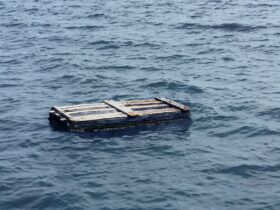Basic First Aid: A Crucial Life Skill
First aid is an invaluable skill that everyone should learn. Whether you’re dealing with minor cuts and bruises or responding to more serious emergencies, knowing how to administer basic first aid can be the difference between a swift recovery and a severe outcome. In this blog post, we’ll explore the importance of basic first aid, surprising statistics on first aid knowledge, how to administer basic first aid, and how you can apply this knowledge in your daily life.
Surprising Statistics on First Aid Knowledge
Did you know that approximately 70% of Americans feel they have inadequate first aid skills, and a staggering 50% of the population lacks the knowledge to provide basic first aid in an emergency? It’s shocking to think that so many people are unprepared to assist in potentially life-threatening situations. By learning basic first aid, you can become part of the solution and be equipped to help those in need.
Importance of Basic First Aid
Saving Lives and Preventing Further Injury
In the event of an accident or medical emergency, administering basic first aid can significantly increase the chances of survival and prevent the situation from worsening. By knowing how to control bleeding, perform CPR, or immobilize a fractured limb, you can make a critical difference before professional medical help arrives.
Empowering Individuals and Communities
When more people are trained in basic first aid, communities become safer and more resilient. In times of crisis, individuals who are confident in their ability to provide first aid can step up as valuable resources, potentially saving lives and minimizing suffering.
Everyday Practicality
From tending to minor household injuries to helping a stranger in distress, having first aid knowledge allows you to address a wide range of everyday incidents. It provides the confidence to take quick and effective action, no matter the circumstances.
How to Administer Basic First Aid
1. Assess the Situation
Before stepping in to provide first aid, assess the surroundings and potential dangers. Ensure the area is safe for both yourself and the injured person.
2. Call for Help
In serious emergencies, dial for emergency services first to ensure professional assistance is on the way. It’s essential to have expert medical support in more severe situations.
3. Control Bleeding
For external bleeding, apply direct pressure to the wound with a sterile cloth or bandage. Elevate the injured limb if possible to help reduce blood flow.
4. Perform CPR
If the person is unresponsive and not breathing normally, administer CPR. Chest compressions and rescue breaths can help maintain blood circulation and oxygenation.
5. Immobilize Fractures
In the case of a suspected bone fracture, immobilize the injured limb to prevent further damage. Use splints or other available materials to support the limb and restrict movement.
Applying Basic First Aid in Your Daily Life
Stay Informed and Prepared
Take a first aid course to gain the necessary knowledge and skills. Many organizations and community centers offer training programs that cover basic first aid techniques, CPR, and the use of automated external defibrillators (AEDs).
Create a First Aid Kit
Keep a well-equipped first aid kit at home, in your car, and at your workplace. This kit should include essentials such as bandages, antiseptic wipes, gauze pads, adhesive tape, scissors, tweezers, and pain relievers.
Practice Regularly
Regularly review your first aid knowledge and techniques to keep them fresh in your mind. Consider participating in refresher courses to stay up to date with any changes in best practices.
Spread Awareness
Encourage friends and family to also learn basic first aid. The more people who are prepared to offer assistance in an emergency, the safer our communities become.
Summary
In summary, basic first aid skills are invaluable in a wide range of situations, from minor accidents to life-threatening emergencies. By learning how to provide basic first aid, you can make a positive impact by potentially saving lives, preventing further injury, and empowering those around you. So, why not take the first step in becoming a more prepared and helpful member of your community? With a little education and preparation, you can be ready to make a meaningful difference in the lives of others.
















